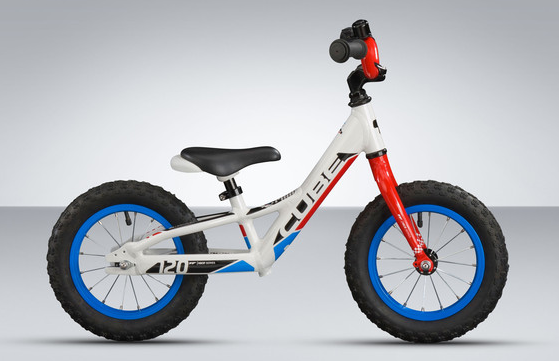Teaching children how to ride a bicycle brings back fond memories of my youth when I first learned to ride.
It is a simultaneously thrilling and frustrating experience to watch young cyclists struggle to figure out the nuances of bike handling and then suddenly “get it”, rolling away on their own the first time.
My own experiences as a child first learning to ride were rocky, but ultimately filled with triumph and a profound sense of freedom.
I crashed frequently and hard; there were times when I wanted to have nothing to do with those two-wheeled monstrosities!
Luckily, my father persevered with a gentle and encouraging hand, and his guidance really paid off – I’ve been a happy cyclist for 30+ years because of it.
There are two major schools of thought when it comes to teaching children to ride for the first time: training wheels or no training wheels.
Parents tend to swear by them or AT them.
Training wheels do serve a purpose if they are used and adjusted correctly by the parent (which many do not). The late Sheldon Brown offers some insight into training wheels (and other techniques for teaching children) on his website.
In my experience as a learner, I was reluctant to have them removed, and they served as a “crutch” for too long. I came to rely on their stability and it took me much longer to develop my own sense of balance. Alternatives to training wheels include starting kids off with scooters or tricycles, or going directly to a straddle or “balance” bike.

There is a huge market for straddle bikes for children, but I’ve found that an even easier (and cheaper) method is to purchase the child’s first bike, slam the saddle down as far as it will go and remove the pedals.
By lowering the saddle, the child can straddle the bike but also put a foot down as a “pontoon” to correct too much lean and to serve as a brake.
This is the method I prefer – because balance is the hard part of the bicycle-learning equation, it makes sense to concentrate on that aspect. Once balance is mastered, the controls (pedaling and braking) are much easier to pick up.
The straddle bike method I’ve had success with is this: start the child off on smooth, level pavement. Have him or her get a feel for pushing the bike around with the feet and getting a sense of the balance required. Once basic balance is learned, move onto a low grassy hill (grassy because crashes are inevitable) and have the child coast down that hill.
A couple successful journeys down that hill and the child is ready for pedals. Perhaps the most important bit of advice I can offer is this: be encouraging but more importantly, BE PATIENT.
We seasoned cyclists forget how difficult it can be to master the balance and control of a bike, and forcing a child to do something or getting frustrated when something doesn’t go smoothly does not help the child learn.
I’ve also found that breaking learning sessions into small but frequent chunks makes a good bit of difference: if a child gets bored, discouraged, or is no longer enthusiastic about the process, take a break and revisit the lessons at a later time.
A bit of pre-ride “pep talk” works well, too. In addition to a quick overview of what we were going to work on, I told my first child, “look, you’re going to crash a few times when you learn, and at some point in the future you will crash as well.
I crashed a lot when I was learning. It’s no big deal and is part of the learning process.” I felt this realistic approach took some of the mystery out of the process and took some of the fear of crashing out of the equation.
My second child is not quite ready for two-wheelers, but he’s enjoying time on his trike and watching his older brother master the “big boy bike”.
With a few lessons, some encouragement and a little luck, your child will discover the joys that bicycles can bring. Anyone can learn, and seeing that newfound freedom in a child’s eyes is worth the scraped knees and the frustration.
If you have any tips or insights for teaching a child to ride a bicycle, please let us know in the comments.


